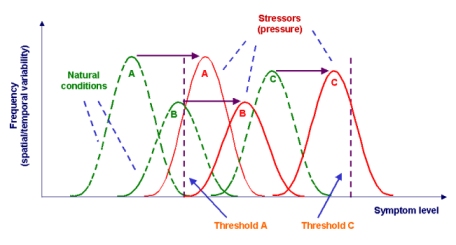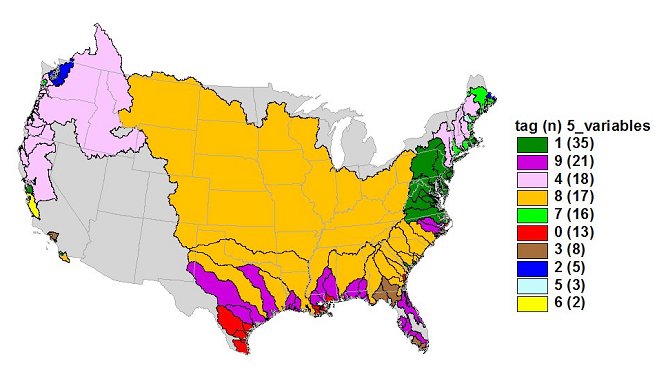|
Type specific indicator variables and thresholds are being considered to improve the
accuracy and management implications of the model. Water body type and thus response
to nutrient inputs dictates appropriate variables to monitor, sampling timeframes
and spatial scales, and appropriate management actions. This is illustrated in the
Figure for three different types of systems (A, B, C); they have different background
levels and different thresholds for where response to nutrient inputs reaches undesirable
conditions. Appropriate management measures for these systems may also be different.
The intent is to keep the number of types as small as possible, with use of a subset
of systems as representatives from a type to reduce monitoring costs while maximizing
management success.

A preliminary type classification for 138 US and 10 Portuguese estuaries has been
made using data for physical and hydrologic characteristics with the Deluxe Integrated
System for Clustering Operations (DISCO).
Details of the methodology can be found in the TICOR report,
together with results for some EU systems.
Some example US results are shown below, based on the use of the following variables:
The different types are color-coded, and the number in brackets for each color corresponds
to the number of systems which are classified into a particular type.

|